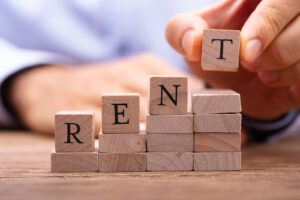Deciding to make the leap into real estate investing is an important first step towards building the life that you desire.
But the next questions then becomes: How do I get started?
From experience I can tell you, getting started can be the most overwhelming part of real estate investing. You’ll quickly learn that there are so many pieces to the puzzle.
The problem is, if you don’t approach investing in an organized and sequential manner, you can quickly get bogged down with indecision and frustration. Believe me, I’ve been there…
Approaching investing in an organized and sequential manner will help you to stay focused and keep things moving forward incrementally. This approach, or process, will also help you to overcome obstacles and barriers that you’re sure to encounter.
So, here we go:

Step 1 – Get your Financial house in order
Based on my experience, before you even look at a property, you need to be clear on Finances:
1) Assess your Personal Finances:
This might not seem glamorous or exciting, but I believe that your real estate venture should be built on a strong financial foundation. This means that your personal finances need to be in order. Some key considerations are:
- How much consumer debt are you carrying? In my opinion, debt reduction should take priority over any investment plan. The costs of carrying excessive consumer debt might far outweigh the benefits of a long-term investment strategy. You need to run the numbers to get a true understanding of your position. One other note, the banks will be more inclined to work with you on financing your venture if your “house is in order”.
- How much Capital can you make available? As it stands now, most lending institutions will require a 20% downpayment for a rental property. Then add Closing Costs of approximately $3000.00 (Land Transfer Tax and Lawyer (depending on where you live)), and possible repairs/renovations, and the initial investment required to get started really adds up. I would suggest having $15,000 to $20,000 available beyond the 20% downpayment. Where will this money come from? A great strategy is to use a secured Line of Credit (LOC) to tap into the equity on your principle residence. You then (hopefully) have the Cash Flow from the rental unit to help you pay down the LOC (the Interest is also tax-deductible). You may take a different approach, but assess your Capital availability as this will have a direct impact on what you can afford.
- Buffer for the unexpected: At some point, you may face extended vacancies or unplanned repairs, you need to be comfortable that your personal finances can handle the added strain if you have to make a second mortgage payment, etc. in a given month. Part of the plan for our venture is to avoid being over-leveraged. Basically, we want to have excess funds available (say on a LOC) in case of an unforeseen expense. Also, you should include a vacancy and repair allowance calculation when you run the numbers on a prospective property.
Ultimately, you want to do a full assessment of your personal finances to understand what you can afford (Capital) and what your risk tolerance is (Buffer). Remember, this is a long-term venture. Taking an extra year or so to pay down debt or solidify your financial standing might be the best action you can take.
2) Create a documentation binder:
When you go in search of financing, the lender will require you to provide a number of documents as part of the application process. We organized all of our documentation ahead of time. This made the whole process much simpler, and it also gave the impression to the lender that you really had your stuff together. Our binder includes:
- A one-page summary of our income, assets, and liabilities (Excel spreadsheet)
- 2 recent pay stubs for each of us
- Current mortgage statement
- Other loan statements
- Credit scores (Equifax)
- Investment portfolio statements
3) Meet your Lender:
Once you have your financial house in order, the next step would be to start the mortgage pre-approval process. This initial step will provide you with direction, in terms of how much capital you have available, and how much you can afford to spend on a property.
For our first property, we felt more comfortable dealing with our long-time personal banker. We did shop around to see what rates were available, but we ultimately gave her “last look” to gain our business. This really simplified the process, and it also worked in our favour as we were able to reduce the interest rate on our principle residence mortgage. In one visit, we re-worked our current mortgage, obtained a secured Line of Credit, and were pre-approved on a rental property mortgage.
**One important note, even though we did stay with our long-time banker for our first property, we made contact with a mortgage broker through a referral from a family member. We realized after the purchase that this broker was much more “investor” oriented, and we decided to work with her on our second property. The broker really opened our eyes as to the various mortgage options that are available in the market. This is another example of the importance of building a strong network of professionals to help you succeed. The right contact can open up a whole other world of options.
Coming Soon: Step 2 – Find the right property, with a sharp focus on Cashflow.





